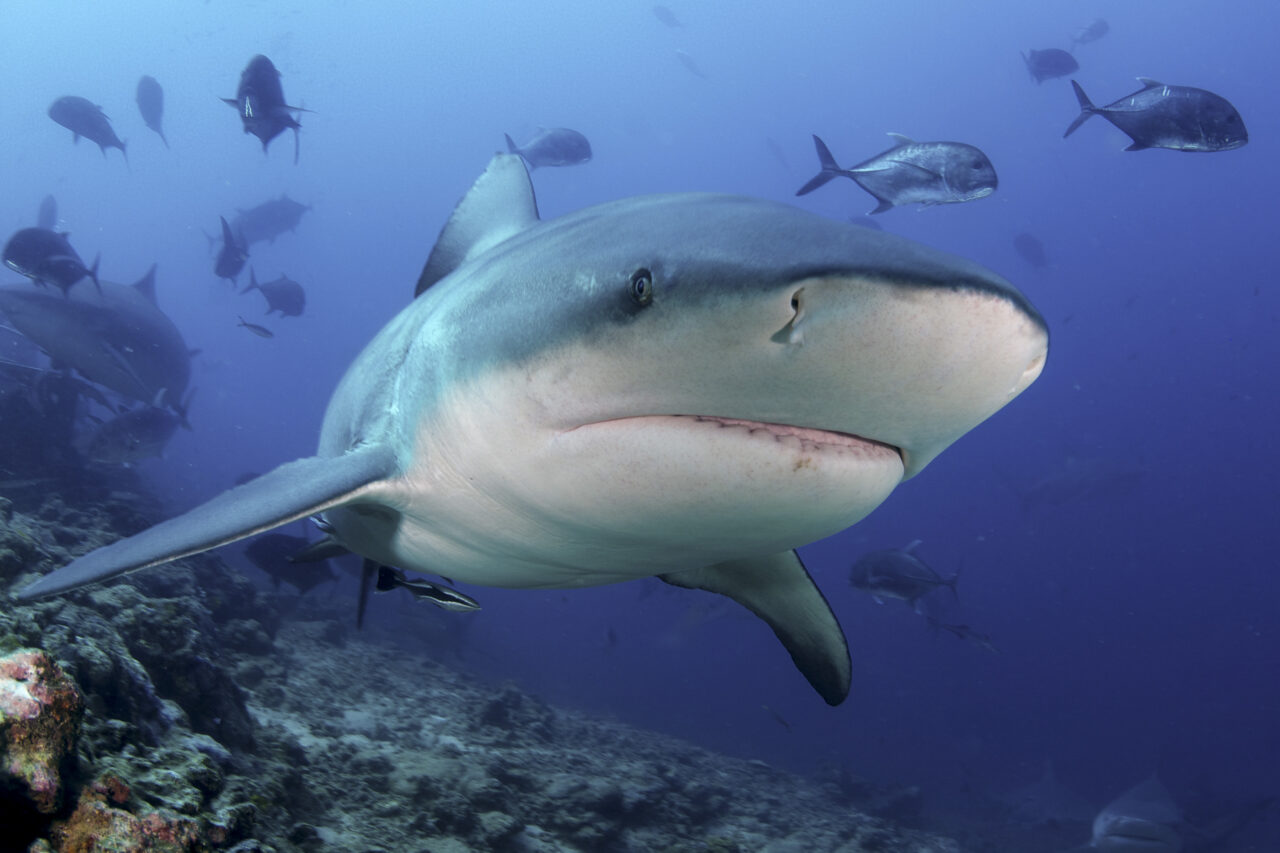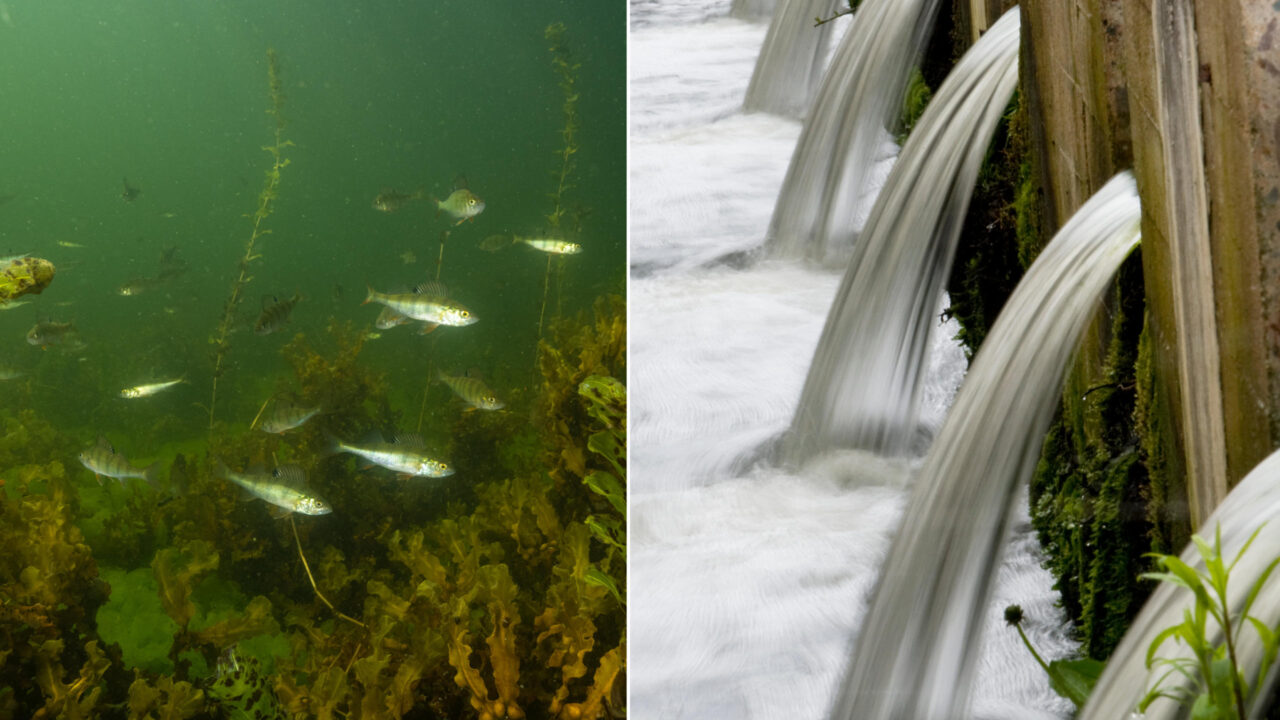Fish behavior, toxic algae, and the role of the sea in climate. These are some of the topics that marine research can address. Diverse subjects, but with a common goal: to better understand what happens beneath the surface.
The oceans cover more than 70 percent of the Earth’s surface. Despite this, we know less about what happens in the ocean than in space. Marine research is about trying to fill these knowledge gaps. Increasing the fundamental knowledge about the ocean without directly pointing to any application is usually called basic research. But sometimes, basic research sparks thoughts on how the knowledge could be applied in society. Then, basic research becomes the foundation for so-called applied research that aims to solve a problem with direct benefits for society. Since the connection between humans and the sea is so significant, it is not uncommon for research projects to shift between basic and applied research.
The oceans are studied by a multitude of researchers in physics, chemistry, biology, and geology. All these subjects can be linked to oceanography, which is the study of the movements and properties of the sea. This is usually done through observations from expeditions, satellites, and the creation of models. Understanding the movement of water is crucial because it affects the climate worldwide.
Many oceanographers work on environmental, energy, and climate issues in government or the private sector. As an oceanographer, one can also engage in research. Oceanography is a science with a broad spectrum of topics such as ecosystem dynamics, ocean currents, and the flow of various substances in the sea. One who has dedicated her life to the sea is the oceanographer Sylvia Earle, who has become one of the internationally known forces for protecting and restoring the world’s oceans.
Oceanography differs from marine biology because it does not always involve studying what lives in the sea. A marine biologist focuses on living organisms in all parts of the ocean and seeks to understand dynamic interactions on different scales, from a specific location to global.
To understand the complexity of the ocean, oceanographers and marine biologists often combine several fields such as biology and chemistry. Weighing in multiple disciplines is particularly important today to create a comprehensive picture that can contribute to the efforts against climate change, pollution, and other factors threatening the oceans and marine life.
Since many places in the ocean are relatively inaccessible to researchers, technological measuring aids are often used today to study these areas. They can remain in the sea and keep measuring the water’s characteristics around the clock. This makes it easier to obtain more measurement values than if researchers had to travel to the measurement site for each reading.
Oceanographic measurement stations at sea are sometimes called ocean observatories where relevant data is collected for researchers. This can include temperature, salinity, and oxygen levels, as well as wind and waves. The Voice of the Ocean (VOTO) Foundation, for example, works to facilitate data collection for researchers. The team working on research and data collection at VOTO consists of oceanographic technicians and researchers. They use so-called gliders to collect data from five locations along the coast of Sweden, and this information can be closely followed through their observation portal.

Ida Beitnes is a Associate Professor at the NMBU. Ida has earlier studied stress as an important contributor to the development of cardiac disease in salmonids.

Marco Vindas is an Associate Professor at the Norwegian University of Life Sciences. He conducts research on the neural control of behavior and physiology in fish. He wants to understand emotional and cognitive responses of fish in response to environmental stimuli. Much of his research is focused towards increasing fish welfare and promoting sustainable exploitation of both farmed and wild fish resources.

Researchers in the United States have developed a transmitter that can reveal where and when sharks give birth to their offspring, according to Vetenskapsradion.

Sweden's only whale is not easy to see. In the Baltic Sea it is acutely threatened, but outside Kullaberg there is a small colony. There, scientists try to learn more about the porpoise's secret life. With the help of new technology, it can be studied both from above and below the water's surface.

It’s now been scientifically proven. If you stop fishing, the number of fish increases! A new report from the Swedish University of Agricultural Sciences (SLU) confirms that no-take zones enhance fish populations and combat the effects of eutrophication.

Soon a decision will be made about mining at the deepest bottom of the world's oceans. Major stakeholders are in the starting blocks

In the ReCod project in Ar on Gotland, they have now succeeded in getting cod to spawn in captivity. This by trying to imitate the cod's natural environments in the laboratory. During the summer of 2022, it will therefore be possible to release around 1 million cod larvae in three different places in Sweden

Now it is scientifically confirmed. The number of herring fry is dramatically decreasing in the Stockholm archipelago. Scientists suspect that large-scale industrial fishing is largely to blame for the disappearance of herring. Today, the big stickleback reigns: "It's like a locust invasion," says Gustaf Almqvist, a fishing expert at the County Administrative Board in Stockholm.

Supergenes help many species adapt to life in different environments. They are found, for example, in cod, where stocks can live at different depths, and in different temperatures and salinities. Even humans have supergenes – but not much is known about them yet

The black-mouthed goby was first discovered in Swedish waters in 2008. Today, it is common in many areas and there is every indication that it is here to stay. But what makes the fish so successful? And what will be its impact on marine ecosystems?

"The sea is the solution to the entire climate issue. If we do not get it, then we have lost the opportunity to deal with the climate issue", says environmental lawyer Lena Gipperth

Deep Sea Reporter has visited one of the important institutions in Swedish ocean research. Researchers Kerstin Johannesson and Ann Larsson show us around and talk about the activities conducted at Tjärnö Marine Laboratory south of Strömstad

"We know approximately how much the fish poop, how much carbon it contains and also how quickly the feces reach the bottom. Against this background, we therefore wanted to investigate how much impact commercial fishing has on carbon storage in the ocean", says Daniele Bianchi from the University of California

Researcher Erin McCallum will investigate whether fish seek out water discharged from treatment plants, and how they may be harmed by it

In the past, we used reeds as both feed, fertilizer and building material. But in modern times, it has mostly been seen as a weed, which you would like to get rid of. During the drought in 2018, researchers were wondering how to reintroduce the reeds to agriculture?

How are we affected by the oceans getting warmer?

For a few weeks in late June and early July, thousands of baby birds jump from the cliffs of Stora Karlsö – before they have learned to fly

In one of our recordings this spring, the researchers brought four dead seals to investigate the causes of death. Wildlife pathologist Elina Thorsson has now autopsied the dead cows, and in this follow-up report we get to take part of the results

The sound on the beach is deafening. Using the word cacophony feels enticing, but on reflection, symphony feels like the right choice of words. On Stora Karlsö, the birds live in symbiosis with each other

For a long time, scientists, fishermen and the general public have asked themselves: Why has Baltic cod become so small? Now, maybe new research can provide an answer

It can be difficult to distinguish between the different fish in a large shoal in the sea. But the researchers agree that they are teachable individuals, and that they are fully capable of feeling pain

78 scientists in petition to protect the oceans

When society was put on pause during the pandemic, many people's opinion was that nature and wildlife would now have a chance to recover. But for the herring pigs on Stora Karlsö, it was the other way around – the missing tourists

Jonas Hentati Sundberg is a marine biologist and has been researching guillemots, on Stora Karlsö, for almost two decades. When the island was closed down to tourists during the pandemic, he discovered something fascinating: The guillemots needed the tourists to survive